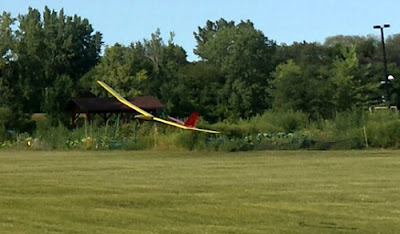 |
| Film Festival Held at Masonic building |
 |
| People Just Coming in Music Just Starting |
I was really amazed by the number of people that attended the event this year, just before the showing of the videos almost every seat had been filled. The quality of the videos appears to be improving and I was impressed last year. My fascination was with the stop action, animated video, and the creative camera angles used in some of the videos. The category Marshmallow and a Ruler I didn’t realize there actually had to be both items included so I added a slide with the marshmallow at the last minute which did make sense with the video and made a good point for the tutorial.
 |
| A Few Flights of Fantastic Foam Flyer Outdoors |
 |
| Face Painting Before Films |
 |
| Fantastic Foam Flyer Video |
 |
| Aerotow Video |
 |
| Marshmallow and Ruler |
 |
| Multiple Building Steps on One Slide |
I am really looking forward to this event next year. It was announced that Frozen River Film Festival is hoped to have more activities going on all year long. That would be great.
Bill Kuhl
http://www.ideas-inspire.com
Related
Frozen River Film Festival website
30 Second Film Festival 2014 Blog Post
WSU College for Kids 2015
Scienceguy Org Blog
20 Second Build Video of Fantastic Foam Flyer
Fantastic Foam Flyer Construction Article


















































